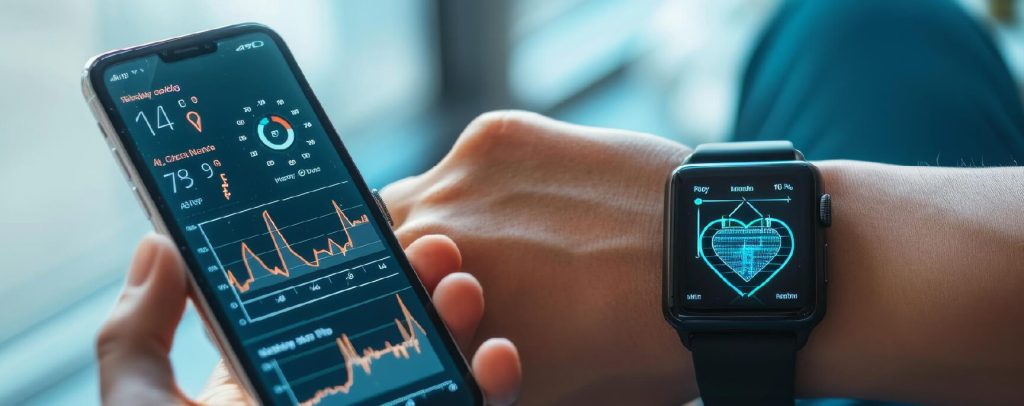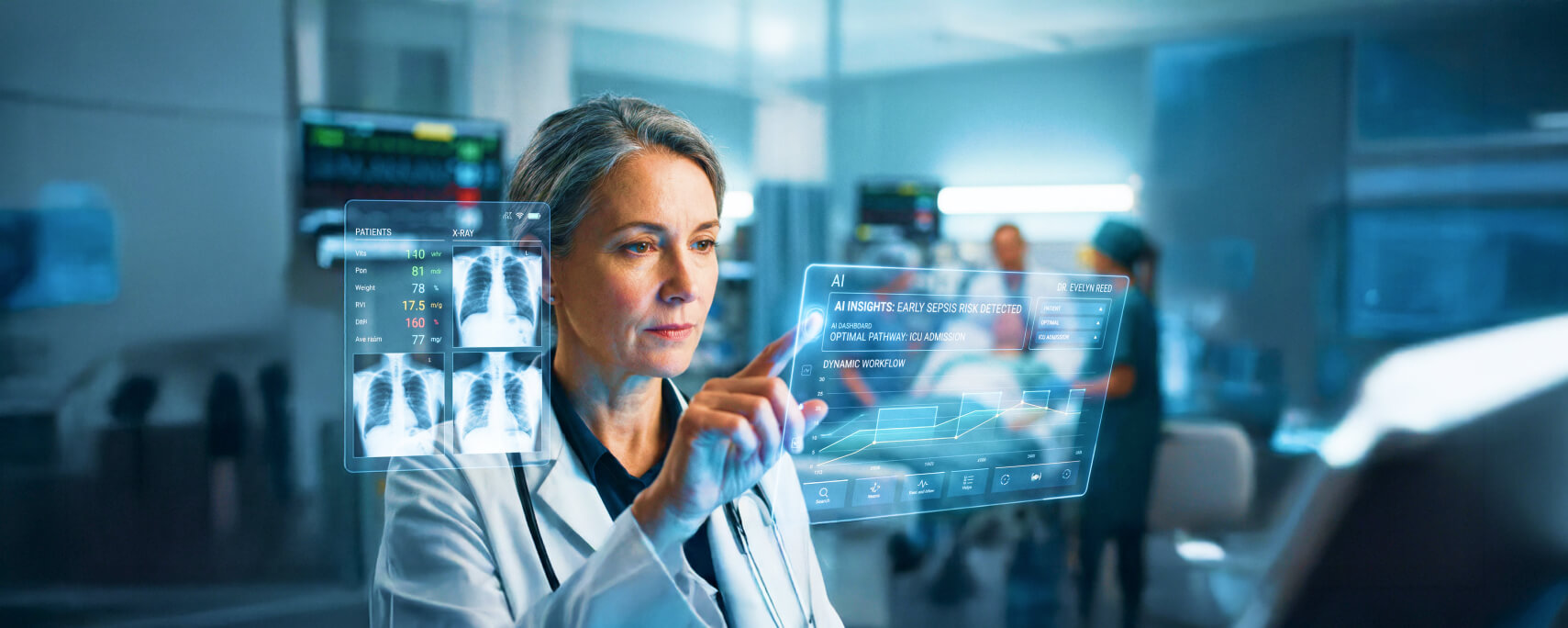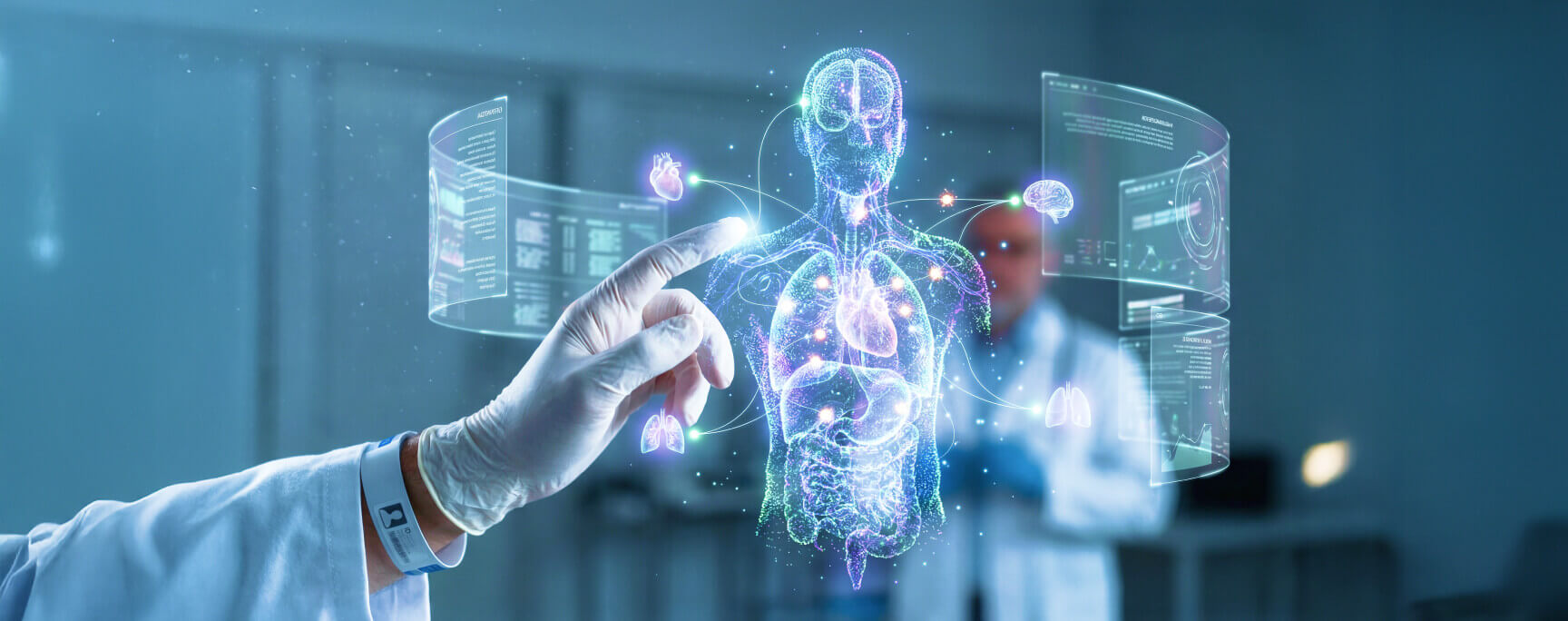Wearable Health Devices Meet AI : Future of Preventive Care
The rise of wearable health devices is challenging the prevalent model of healthcare, which has been reactive forever. We tend to wait until the symptoms occur, then make an appointment with the doctor, diagnose the issue, and then cure it. This approach, while essential, is inherently delayed, more expensive, and at times less effective than being proactive. In recent years, however, a change in preventive healthcare solutions is beginning to emerge. Developments in two areas: wearable technology & Artificial Intelligence (AI), are slowly starting to change the way we think about and use preventive care.
The global smart wearables market, valued at approximately $84.2 billion in 2024, is projected to reach $186.14 billion by 2030, reflecting a solid compound annual growth rate of 13.6%. The spurring growth is driven by increasing concerns regarding health, epidemic rates of chronic diseases, and the proven efficacy of AI in healthcare monitoring systems.
Understanding AI in Wearable Technology
To appreciate the quantum, leap that AI introduces, we must first look at the journey of wearable health devices. The first iteration of consumer wearables, propelled by Fitbit, was revolutionary. The gamification of fitness with daily step count, calorie estimation and basic sleep tracking was a success because it provided the user with previously unseen visibility into a part of our lives we were completely unaware of.
However, these early devices were data collectors, not interpreters. They could tell you how much you moved or slept, but they couldn’t provide deep context or answer the crucial question: “What does this data mean for my personal health risk?” The raw data: heart rate, motion, sleep stages, was a stream of numbers without a narrator. This is precisely where AI enters the story.
Raw biometric information collected from smart health wearables is noisy and complicated. A sudden increase in heart rate may be a signal of stress, an augur of illness, or the reaction of the body to the physical activity of climbing stairs. It is beyond human capacity to scan these tons of data for meaningful trends continuously.
This is the problem that AI in wearable technology solves so effortlessly. AI and Machine Learning (ML) algorithms are the enablers for a sophisticated analysis engine that works in the background and turns streams of raw data into actionable health insights.
Core Technologies Driving AI-Powered Health Devices
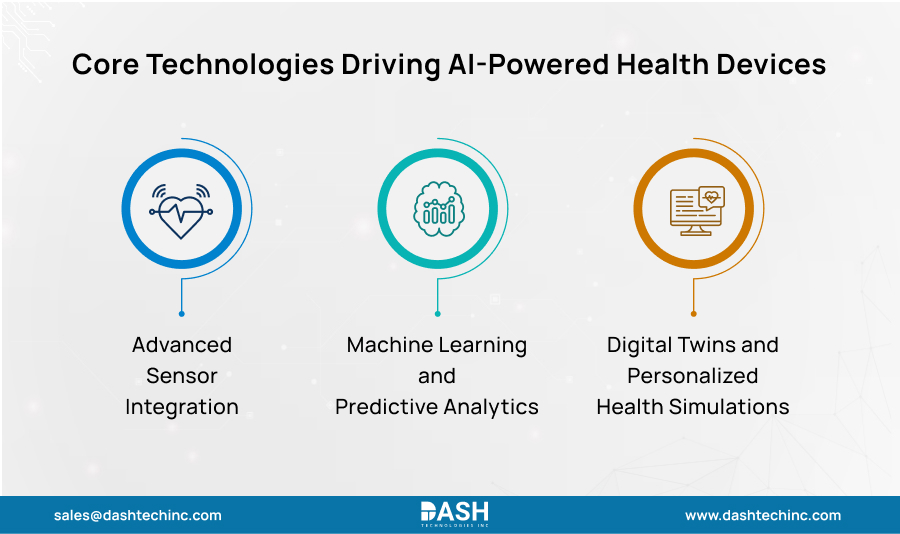
Advanced Sensor Integration
Current wearable health technology uses several sensor modalities in conjunction. Photoplethysmography (PPG) sensors monitor blood flow and heart rhythm, electrocardiogram (ECG) sensors detect electrical heart activity, accelerometers measure activity and movement, and more advanced biosensors can measure biochemical markers such as glucose and cortisol.
Sensors are at a level of being miniaturized and powerful enough to be used in wearables while also providing clinically accurate data. Studies have shown that more recent wearable devices tend to have a 92% – 99% accuracy rate for the monitoring of most vital signs. Coupled with continuous monitoring, this accuracy gives medical staff unparalleled information about the patient’s overall health.
ML & Predictive Analytics
The actual promise of AI in wearable technology is prediction. Sophisticated algorithms screen trends through a broad spectrum of health markers to anticipate probable health occurrences prior to clinical indicators. For example, machine learning algorithms can identify heart attacks with more than 96% accuracy by catching small modifications in heart rate variability, activity levels, and other physiological markers.
The AI predictive models of healthcare monitoring are adaptive; they learn & evolve with ongoing data collection, leading to increasingly personal health profiles. The system can distinguish increasingly between acceptable variability & perhaps disturbing trends, reducing false alarms yet continuing to capture vital changes in stride.
Let’s Turn Data into Decisions
Together, we can transform predictive insights from wearables into meaningful actions that improve care and strengthen your business.
Let’s Partner UpDigital Twins and Personalized Health Simulations
The digital twin is a predictive, dynamic virtual model of a person’s physiology and behavior over time created by combining continuous wearable sensor data with context data. The digital twins facilitate risk-free in silico simulation of disease development and testing of personalized interventions, allowing clinicians to forecast a patient’s response to treatment or a change in lifestyle prior to the same being applied in real-life wearable health devices.
The dynamic character of a user’s digital twin enables continuous updating of model parameters of your intelligent health wearables (for example, metabolism, cardiac health, activity behavior, etc.) from real-time data inputs, which can enable truly personalized preventive healthcare solutions and just-in-time health interventions.
Real-World Applications of AI-Powered Wearables
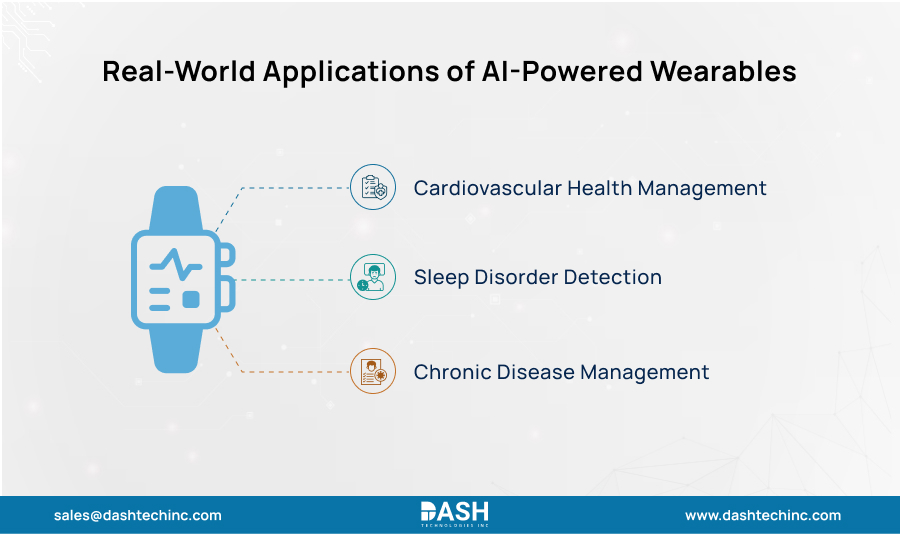
Cardiovascular Health Management
Heart disease is a leading cause of death, but most cardiac conditions are preventable if caught early.
Atrial Fibrillation (AFib) Screening: Some devices like the Apple Watch and Samsung watch can screen for AFib by using a photoplethysmography (PPG) sensor and an electrocardiogram (ECG) sensor to record heart rhythm, running onboard AI algorithms that continuously screen for irregularities. In the event of a suspicious event, a user can be asked to take a medical-grade ECG measurement on the spot and share the result with their doctor. Many people with this major stroke risk factor have had their lives saved due to early detection.
Hypertension & Blood Pressure: The “holy grail” of cuff-less blood pressure monitoring is still out of reach, but some smart health wearables have taken a first step at approximating this using Pulse Transit Time (PTT) and other AI-based correlations. Wearable health devices can track the user’s blood pressure trends over time and alert both the patient and their clinician to sustained elevations that warrant intervention.
Sleep Disorder Detection
Smart health wearables using AI can precisely detect sleep stages as well as sleep disorders such as sleep apnea. It is achieved by wearable technology in healthcare employing a set of parameters, such as movement and motion, heart rate, breathing patterns, & oxygen saturation to evaluate overall sleep health.
Sleep apnea attacks can be identified by AI algorithms with clinical-grade accuracy, enabling early treatment in a malady that afflicts millions but typically remains undiagnosed. The potential is particularly significant owing to the high co-morbidity of untreated sleep disorders with cardiovascular disease, diabetes, and cognitive dysfunction.
Chronic Disease Management
Continuous Glucose Monitors (CGM): Dexcom and Abbott products employ a thin sensor filament inserted immediately beneath the skin to report glucose in the interstitial fluid every few minutes. This information from a wearable health device is streamed to a smartphone or smartwatch. AI algorithms analyze this data to predict hyperglycemic (high blood sugar) and hypoglycemic (low blood sugar) events before they occur, giving patients crucial time to act.
The Artificial Pancreas: The holy grail is a “closed loop” system. The CGM data is plugged into an AI controller, which automatically sends instructions to an insulin pump to deliver just the right amount of insulin. The system, which is also known as an artificial pancreas, is indistinguishable from a healthy pancreas and offloads a tremendous amount of cognitive burden from the patient.
Final Thought
Artificial intelligence combined with wearable devices does more than augment existing approaches; it re-architects the relationship that people have with their own health. It puts people in the driver seat with personalized insights, gives clinicians objective, longitudinal data to work with, and the entire health system an entirely new suite of prevention tools. The old, inefficient, reactive, one-size-fits-all model of medicine is being displaced with an exciting new one that is predictive, personalized, participatory, and preventive healthcare solutions.
The moment to act is now for those organizations well placed to be leaders in this new epoch. The technology is ready, the consumer demand is coming, and the ability to make a difference, both for human health and business outcomes, is huge.
Are you prepared to discover how your business can leverage the enormous potential of wearable health devices & AI wearables to build next-gen preventive healthcare solutions? Contact Us to get your innovative idea to market.
About Dash

Dash Technologies Inc.
We’re technology experts with a passion for bringing concepts to life. By leveraging a unique, consultative process and an agile development approach, we translate business challenges into technology solutions Get in touch.
